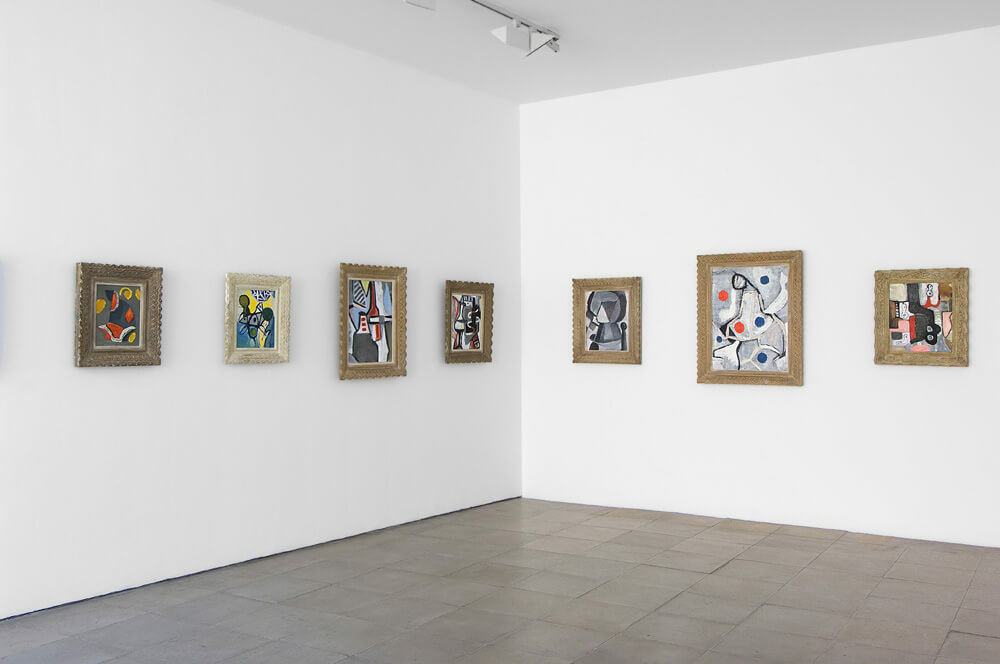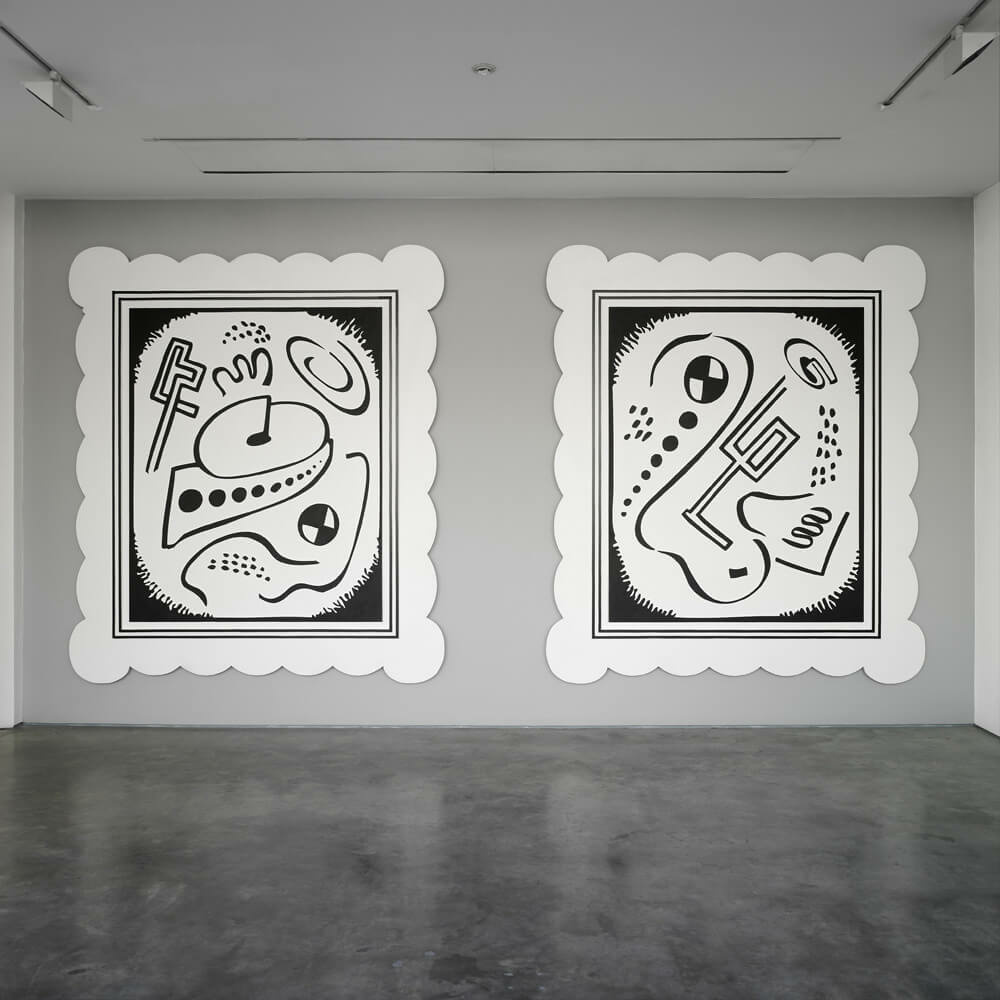“It was rock that got me into painting. Being a painter is an extension of the performance
idea that started with my interventions into serious music.” - Rodney Graham 1
“Of all the personae Rodney Graham has chosen or may yet choose to embody and explore,
that of the ‘gifted amateur’ combines especially sensitive qualities of introspection and
vulnerability – perhaps because the artist does not give it any heroic dimension, whereas he
had previously accustomed us to tragicomic, gruesome or even absurd manifestations.
Graham’s rigour and culture contain an intellectual curiosity that forces him to apprehend the
structural foundations of the psyche and demands a mastery of the means that allow brilliant
and lyrical variations on the inexhaustible theme of the Renaissance man.” - Josée Bélisle 2
Lisson Gallery is proud to present its upcoming exhibition with Canadian artist
Rodney Graham, the sixth since his first exhibition at the gallery in 1990.
Graham defies categorization by employing multiple styles and by working in
diverse media including photography, film, performance, music and text. Graham’s
work examines social and philosophical systems of thought, in particular those
derived from the transition of the Enlightenment into Modernism. Underlying
each work is an historical context, through which a complex narrative
incorporates literary and philosophic references and visual puns.
Wet on Wet: My Late Early Styles, his upcoming exhibition at Lisson Gallery, will
present a new body of works reflecting on the practice of painting. Situated on
the convergence of ironic distance, serious homage and play, Graham inserts
painting into the context of a post-medium practice: the works are an extension
of his artistic persona undertaking the act of painting and are inconceivable as
separate from it.
Possible Abstraction Pair 1, 2007, presents two almost identical lacquer abstract
compositions on wood panels, whose various elements and their voluptuous
frames could humorously play on Francis Picabia’s mechanomorphic works or
the wood reliefs of Jean Arp. The paintings are part of a larger series, which takes
the parody on abstraction further by proposing different combinations of the
same elements. The work proceeds from a cartoon Graham found in a 1950s
men’s pulp magazine, where two persons are standing in front of almost identical
caricatured representation of two abstract paintings by the artist “Picado” made
about 40 years apart. One man says to the other: “If You Ask Me, His Earlier
Paintings Were Much Better.” This sketch is taken up by Graham in the silkscreen
edition that accompanies the work.
1 Rodney Graham quoted in Steiner, Shepherd ‘In the studio with the gifted amateur – Rodney Graham practices
painting’, Modern Painters, March 2007
2 Bélisle, Josée, ‘Brilliantly Paradoxical Work’, in Rodney Graham, Musée d’art contemporain de Montréal, 2007
Inverted Drip Painting, #1 – #8, 2007, continues the artist’s exploration of
abstract painting tropes. The use of parallel sequential strips of pure undiluted
colour refer to Graham’s fascination with the American abstract expressionist
painter Morris Louis, whose work amongst others has been deeply interested
him during the last decade. In ironic reference to the originals, Graham’s paintings
are hung upside-down, against the gravitational direction of the flow of paint.
Circularity and self-reflexivity are recurring strategies in Graham’s work and in
The Gifted Amateur, Nov.10th, 1962, 2007, a three-part lightbox, the artist takes
on the persona of a painting dilettante. Graham is standing in his pyjamas, intent
on pouring paint on a large stretched canvas in the manner of abstract
expressionism. The setting is a spacious west coast modernist living room, the
subject of many Architectural Digests. The highly detailed photograph weaves
together multiple references, showing Graham surrounded by stacks of artist
monographs and scattered newspapers protecting the wooden floor, whose
titles and dates are clearly readable, placing the image at a precise historical time.
The catalogue “Wet on Wet – My Late Early Styles”, takes its title from a series of
recent heavy impasto abstractions, also displayed as part of the exhibition. The
paintings re-discover classical modernist tropes without obvious irony. The
catalogue, hardback with 12 colour plates, is published by Lisson Gallery on the
occasion of the exhibition and is distributed by Walther Koenig.
The Rodney Graham Band will be releasing their new album “Why Look for Good
Times?” this October. Copies of the record are available at Lisson Gallery on
request.
Rodney Graham was born in 1949 in Vancouver, where he lives and works.
Graham’s work can be found in a number of public collections worldwide,
including the Museum of Modern Art, New York, the Centre Georges
Pompidou, Paris, and the Metropolitan Museum of Art, New York.Solo
exhibitions include a retrospective (2004-05) that toured venues including
MoCA, Los Angeles, ICA, Philadelphia and Vancouver Art Gallery; BaWAG
Foundation, Vienna (2007); Sprengel Museum, Hanover (2006); Bergen
Kunsthalle (2006); Musee d’art Contemporain de Montreal (2006); K21,
Dusseldorf (2003); Whitechapel Art Gallery, London (2001); Hamburger
Bahnhof, Berlin (2001). He has participated in landmark exhibitions, representing
Canada at the Venice Biennale in 1997, and exhibiting at documenta IX in 1992
and at Sculpture Project Muenster in 1987.


